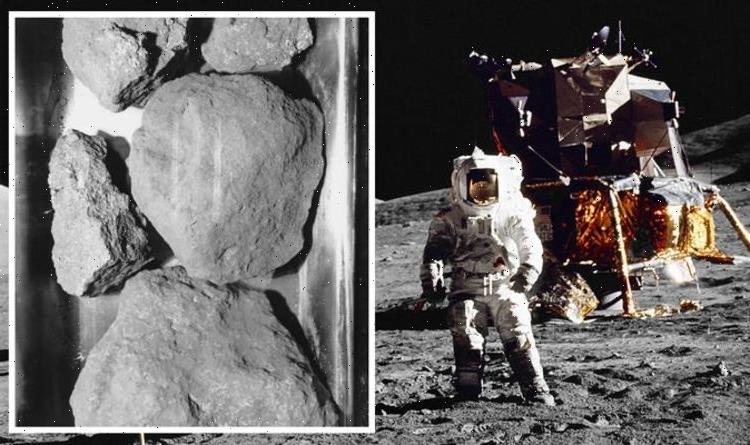Jupiter's Ganymede moon can be heard from Juno spacecraft
We use your sign-up to provide content in ways you’ve consented to and to improve our understanding of you. This may include adverts from us and 3rd parties based on our understanding. You can unsubscribe at any time. More info
For more than 50 years, scientists have been puzzled about why some of the lunar rocks that were brought back from the surface of the Moon appear to have been formed inside a magnetic field as strong as that on Earth. The magnetic fields that are inside a planetary body are produced by the churning movement of material present in planets’ electrically conductive molten cores. The Moon, which is non-magnetic, has a very different composition of its core than the Earth’s, which is magnetic.
The core of the moon is dense and frozen and contains only a small outer core region that is fluid and molten.
Scientists believe that after it was formed around 4.5 billion years ago, the moon’s insides cooled fairly rapidly and evenly.
This means that it doesn’t have a strong magnetic field, while many scientists believe it never did.
However, when NASA retrieved a few of the three billion-year-old rocks during the 1968-to-1972 Apollo missions, they were shocked to find that these rocks were created inside a geomagnetic field powerful enough to rival Earth’s.


What’s more intriguing is that this magnetism was only noticed on a handful of rocks, while the rest supported the previous hypothesis and had little to no magnetism.
Scientists have tried coming up with a range of theories to explain this gap, including a theory that the Moon was bombarded by so many asteroids that the impact jolted the lunar core into fitful activity.
A new study, published in Nature Astronomy, shows that giant rock formations sinking through the Moon’s mantle could have produced the kind of interior convection that generates strong magnetic fields.
Researchers believe that the processes could have produced intermittently strong magnetic fields for the first billion years of the Moon’s history.

Alexander Evans, an assistant professor of Earth, environmental and planetary sciences at Brown University , said“Everything that we’ve thought about how magnetic fields are generated by planetary cores tells us that a body of the Moon’s size should not be able to generate a field that’s as strong as Earth’s.”
“But instead of thinking about how to power a strong magnetic field continuously over billions of years, maybe there’s a way to get a high-intensity field intermittently.”
When the Moon’s core solidified, minerals like olivine and pyroxene that were denser than the liquid magma sank to the bottom, while less dense minerals like anorthosite floated to form the crust.
DON’T MISS:
EU on brink as UK urged to sign ‘energy alliance’ to thwart Putin [SPOTLIGHT]
End of the world warning as Elon Musk warns of extinction [INSIGHT]
Covid breakthrough as ‘Achilles’ heel’ of virus found [REVEAL]


The researchers found that when these heavier minerals sank to the bottom, they would have given a major jolt to the Moon’s core dynamo.
When the cool mineral blobs came into contact with hot molten core, the temperature mismatch would have driven an increased core convection.
This convection would be enough to drive a magnetic field at the Moon’s surface as strong or even stronger than Earth’s.
Source: Read Full Article
